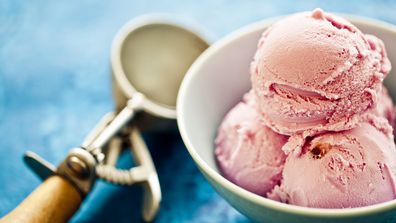A few simple dietary tweaks could actually support you in losing a few kilos as you start to venture outside of the home more, post-lockdown.
Here are the simple steps to help you emerge from this period leaner, healthier and fitter than you were before…
For a daily dose of 9Honey, subscribe to our newsletter here.
Get back in touch with your hunger
One of the key reasons that so many of us gradually gain weight year in, year out, is that we frequently eat when we are not hungry. Rather we eat because tasty food is on offer, others are eating, or we are tired, bored and emotional.
Eating when we are not hungry not only means that we lose track of our natural hunger and fullness signals, but it also programs the body’s hormones to continually be in storage mode, making weight loss increasingly difficult over time. So if you cannot remember the last time your felt really hungry, now is a great time to give your natural hunger and fullness signals a lot more attention.
Try having a light dinner such as a soup or salad and then not eating for 14-16 hours. Here you are likely to start the following day with distinct hunger in the morning and can then start to eat every 3-4 hours rather than every 2-3 hours, and actually wait until you are genuinely hungry before doing so.
READ MORE: The right way to lighten up your dinner and lose weight

Skip the snacks
If you are especially active and start your day early, you may need to snack. On the other hand, if you are not getting out of bed until 8am or 9am, and spend much of the day sitting, chances are you do not need to snack at all.
Committing to three meals each day, and meals which are substantial, nutritionally balanced and filling, will automatically eliminate 200-300 extra calories you are likely to be munching on via mindless snacking.
Factor in a low-calorie meal
Less movement means that we need fewer calories yet this can be challenging when we are at home more, bored and keen to eat as frequently as possible.
One way that you can continue to eat the same volume of food but consume fewer calories overall is to factor in one meal each day that is especially low in calories. An average meal will clock in at 500-600 calories, and if you simply swap one of these to a 200-300 calorie meal via a soup, shake or salad, you will effectively slash a significant number of calories from your usual intake without really noticing.
READ MORE: Best spring salad recipes for weight loss, energy, immunity, and stress
Routinely fast
Long days at home also mean we have more time to sleep and much more control over our meal times than we are used to, and the good thing about this is that we can routinely factor in a daily fast of 12-14 hours without food.
This extended period of time without calories helps the hormones that control fat metabolism return to baseline levels, whilst also helping to ensure we are actually hungry the next day after the overnight fast. For many of us this means ditching the late night snacks completely.
Isolate your treats
Munching on high calorie treats and snacks at night has become the norm for many, blowing out our daily calorie intake. When you consider that a single row of chocolate or chocolate biscuit contains 100 calories, it is easy to see how easy it is to overeat these energy dense foods.
This does not mean you have to forgo treats completely, but rather limiting the number of treats you consume each week or day is the key to avoiding a complete calorie blow-out.
The average person will have an extra 100-200 calories a day to play with and you can use this for a little extra chocolate, wine or salty snack, just watch your portions to keep your calories controlled.
READ MORE: 13 foods that are surprisingly gluten-free
Limit alcohol
With a reported increase in the amount of alcohol Aussies are consuming, and with a standard drinking offering 80-100 calories, it is easy to see how extra calories from alcohol can easily add up.
Like a treat, there is nothing wrong with enjoying a drink or two occasionally, but it’s when a drinking session translates into 3-4 drinks every single night that it becomes increasingly difficult to control your weight.
As a general rule of thumb, commit to at least two alcohol-free days each week, and try and stick to just 1-2 standard drinks when you are enjoying a couple, and most importantly watch your portions. A bottle of wine should give you at least 8 serves of alcohol, or last four days, and let’s be honest, most of us pour a whole lot more than that in our glasses at the moment.
Author Susie Burrell is a leading Australian dietitian and nutritionist, founder of Shape Me, co-host of The Nutrition Couch podcast and prominent media spokesperson, with regular appearances in both print and television media commenting on all areas of diet, weight loss and nutrition.
